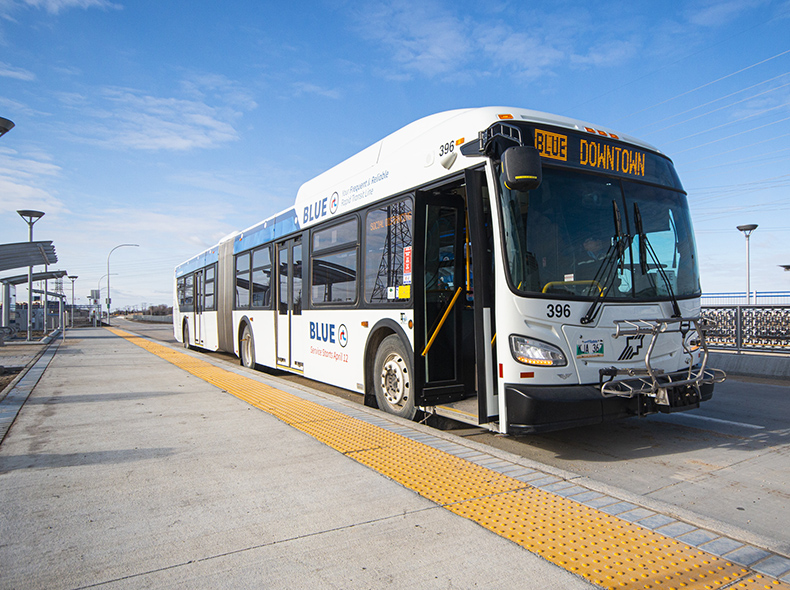
Frequent transit service connects communities across the city in a comprehensive network anchored by three rapid lines; a historic downtown landmark is reborn as a central hub in the public transportation system; and transit is made more accessible for people of all ages and abilities, making the way for Winnipeg Transit Plus to be integrated with the conventional transit service.
That is just some of the vision laid out in the draft Winnipeg Transit Master Plan, currently in its third and final phase of public engagement, with virtual meetings where people can learn more scheduled for October 24 and October 28 and an online survey open until Friday, November 6.
The plan includes an overhaul of the current Winnipeg Transit network, proposing a number of different service types to meet different needs and demands, all connected by a primary network made up of rapid, frequent and direct lines.

Different kinds of infrastructure that can be built to support the network is also proposed. These include everything from small changes to existing streets that would keep transit moving, to the construction of an elevated transitway alongside Main Street into the historic Union Station passenger platforms.
“One key piece of this plan is the concept of introducing service before infrastructure. In most cases, we’re proposing rapid transit on or beside streets that already exist,” said Kevin Sturgeon, Senior Transit Planner with Winnipeg Transit.
Union Station plays a central role in the draft plan, which recommends the historic train station serve as a hub for all three rapid lines and five other primary network routes. Passengers would catch buses at three locations at the station under the draft plan: in front of it and behind it at street level, and from an elevated transitway inside.
Sturgeon explained the plan proposes focusing on downtown infrastructure first, because that’s where you find the most riders and the most congestion, and the greatest potential return on investment.
Once the downtown pieces are in place, the next infrastructure priorities under the plan would see lines built outward in each direction, including a link that would extend the BLUE rapid transit line to St Vital across a new rapid transit bridge.
The Winnipeg Transit Master Plan also sets important goals of improving accessibility and integrating Winnipeg Transit Plus with the conventional transit system. To do that, it proposes updating policy, identifying bus stops where transfers are made as priority locations for accessibility improvements, and a pilot project that would see some Transit Plus trips taken partially on conventional transit.
The goal is to allow Transit Plus to better serve more customers, more efficiently and with less delay.



